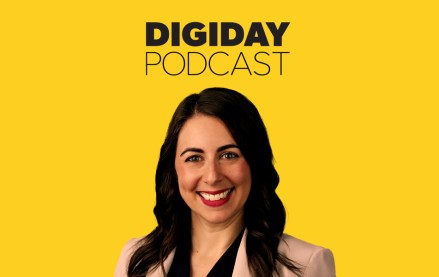
When an employee at Unilever is called in for a review with their manager, first on the agenda is their feelings. At a company full of suits, senior executives have been encouraged to open up about their personal experiences with mental health, and employees are encouraged to do the same.
The mindfulness boom hasn’t missed brands in the U.K. As work-life balance rises to the top of millennials’ wish lists, companies are now changing their office environment accordingly. Now, a growing number have been training mental-health first-aiders to act as a first point of contact for staff who may be struggling in silence.
The idea of a mental-health first-aider — someone who can spot and assist people experiencing emotional distress — isn’t new. The idea arrived in the U.K. 10 years ago with social enterprise MHFA England. However, the organization’s CEO Poppy Jaman says while the idea is already established in the public sector, brands have recently been showing interest, too. Her team of trainers has now worked with around 200, including EY, Mars, Channel 4 and M&S.
Companies have an incentive to make sure their employees are feeling stable: Recent statistics from the Labour Force Survey show stress accounted for 45 percent of sick days in the U.K. last year. Meanwhile, poor mental health amounts to an estimated £26 billion price tag for employers. But, according to Jaman, it’s only recently that businesses have been thinking about addressing the root cause.
At household goods giant Unilever, senior staff discovered that mental health consistently ranked as a top-three item that employees claim on its medical insurance. Now, all of its line managers have mandatory half-day training in mental-health first aid. The business has seen a decline in the number of sick days its workers take since launching the program, and, according to Jaman, the company has also saved £10 for every £1 it spent in this area.
According to Beth Ryder, well-being manager at M&S, its HR teams are all trained as mental-health first-aiders to help the brand’s managers “build capability and confidence dealing with mental ill health.” This includes spotting early signs of distress and helping in a crisis situation, like an employee having a panic attack. They can also refer people to the relevant counseling services and check in on their recovery.
While its trainers are new, the brand has been moving in this area for several years. The organization first launched an online portal for well-being in 2008, and every October it has an awareness drive around National World Mental Health Day. Last year, it dotted life-size inflatable elephants around the office to get people talking about the elephant in the room: mental health. Now, it’s closing the loop by having people to contact about these issues.
Another retailer, WHSmith, is currently sending all 1,100 of its line managers to train with the same program, with a plan for them to deliver training in-house during December. Alison Garbutt, head of strategic projects at WHSmith, says the response from employees has been “fantastic” so far at events promoting the initiative.
“Now that I am more familiar with the subject matter, I can’t believe that I didn’t learn the basics about mental health years ago,” she added.
For Garbutt, the decision makes business sense, but also holds personal meaning, having lost a friend to suicide four years ago. “At the time, I was concerned that if I spoke to my friend about how he was feeling, I might have made things worse. I now know this not to be true,” she said.
While many brands are now offering in-house counseling (which keeps employees on site), according to Jaman, this isn’t enough on its own. For her, there’s often a disconnect between the top-line “message” about the importance of seeking help and how comfortable employees feel actually accessing that help. Awareness about mental health is one thing, but it’s another to have someone who’s available to address issues within a time of crisis.
“The boards of a lot of these companies understand the basics and think they are demonstrating leadership on it, but it’s not translating down to the workforce,” Jaman said.
Barbra Wright, the founder of brand consultancy Thinking Room, agrees. “When you speak to businesses about how stressed and busy they are, there’s this outpouring of ‘Yes!'” she said. However the solutions — which for Wright involve finding the space to unplug and do nothing — can be scary. Plus, those who put the onus on workers are also failing them. Companies need to make this change at an organizational level, with things like dedicated meditation time, or a ban on emails after a certain time in the evening.
“If [mindfulness] is passed down to the individual, it’s going to be the first thing to drop off their list of 57 other things to do.”
Not all brands who have prioritized mental health are comfortable discussing their programs publicly. Some who have trained with MHFA England, for example, have said they don’t want to make it look like their employees can’t cope or are overloaded with work.
“People don’t want to talk about the fact that their employees aren’t OK –especially if it feels like it’s their fault,” explained Wright.
However, this is changing, albeit slowly. “Now that narrative is landing,” said Jaman. “People are happy changing to say they are a good mental-health organization and can attach that to their brand.”
More in Marketing

Consumer sentiment heading into the holidays is low, but that could mislead marketers
Consumer sentiment’s low going into the holiday season, but marketers shouldn’t take it as a sign to retreat from the fray.

When CMOs pay for agents not agencies: S4 Capital’s AI gambit
S4 Capital execs say the quiet part out loud: AI is eating the ad industry.

Ferrero’s Danielle Sporkin breaks down the reality behind retail media’s full-funnel promise
The brand exec shared how Ferrero is rethinking retail media as a full-funnel tool — but challenges remain — at the Retail Media Advertising Strategies event in New York City.





